Crabapples or crab apples (Malus), are often considered a foragers favorite. A common misconception, and old wives tale, is that crab apples are toxic or unsafe to eat. But this is generally an assumption based on a few species and varieties which have bitter flavoring, and the popularity of the already well known orchard apples. Crab apples are in fact the ancestor of the cultivated, orchard apple species we know and love today (Malus domestica).
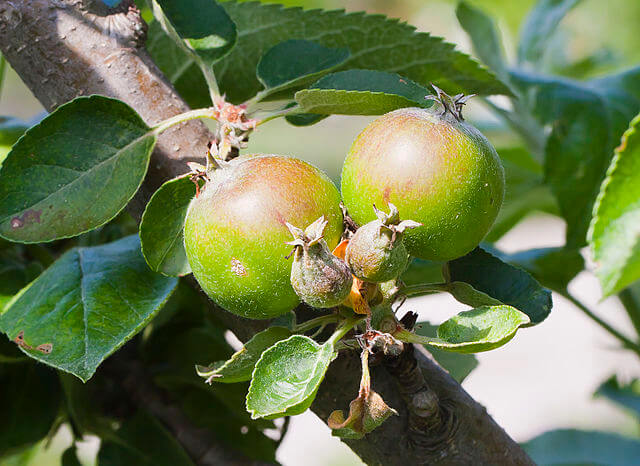
There are currently over 40 species of wild crab apple across the world. With many being used as root stock for domestic apple orchards. They are also cultivated simply as beautiful ornamental shrubs and trees. Each selected for characteristics like their delicate blossom, or the bold color of their fruits in fall.
Why Are Crab Apples Different To Supermarket Apples
The apples we buy in supermarkets and at grocers today are simply a domesticated variety of crab apple species. The wild apple (Malus sieversii) from central Asia is thought to be the ancestor of a huge variety of our domestic apple varieties today. These domestic apples have been cultivated for centuries, and hybridized. Farmers and orchard owners mixed varieties together to optimize characteristics of the fruit, like size and sweetness.
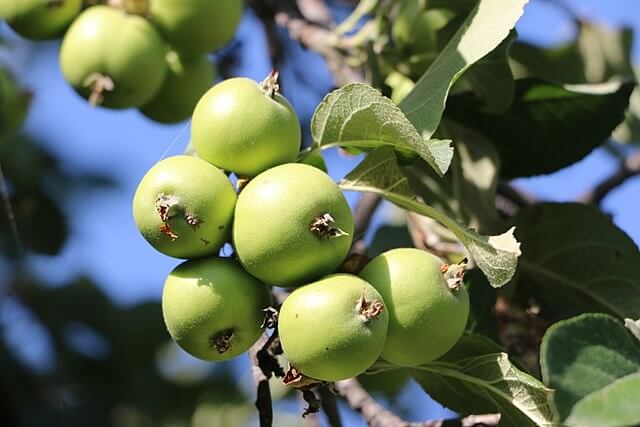
The fruits on crab apple trees are generally much smaller and firmer than those of the domesticated apple. They often have a more oval shape, and can be found in shades of green, yellow or red, with flushes of pink. Generally if an apple is smaller than 2 inches in size, it’s considered to be a crab apple!
Crab apple and domesticated apple trees are still very similar in appearance. With gnarled branches, an average height of about 8 metres, and delicate 5-petal blossom in shades of red, pink and white.
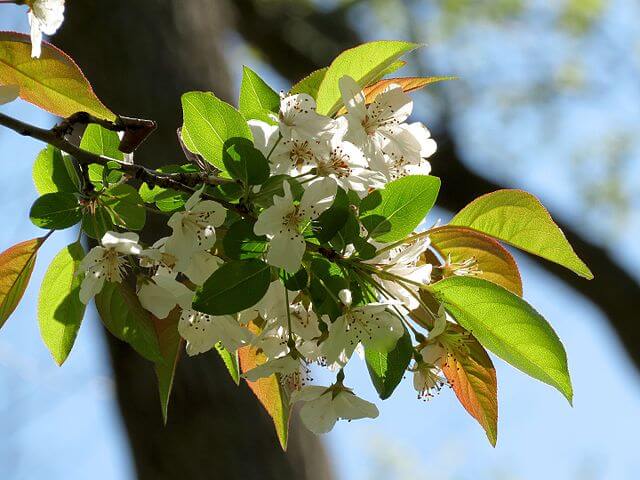
So, Can You Eat Crab Apples?
Yes! Crab apples are safe to forage from the wild and safe to eat. They’re simply a wild, miniature version of the apples we buy from stores and markets. As with any normal apple, just make sure to avoid the seeds and core!
Cultivated apple, and crab apple seeds do contain tiny traces of cyanide, but even if ingested, there is very little risk. As the health line website notes, you would need to chew and ingest a huge amount of seeds for any negative side effects.
What Can Crab Apples Be Used For?
Whilst some people may find crab apples a bit too tart when plucked straight from the tree. You can instead use crab apple fruits to make some amazing, fall inspired dishes. From ruby red jellies and jams, to delicious wines, liqueurs, syrups and sauces, or even a tasty pie filling!
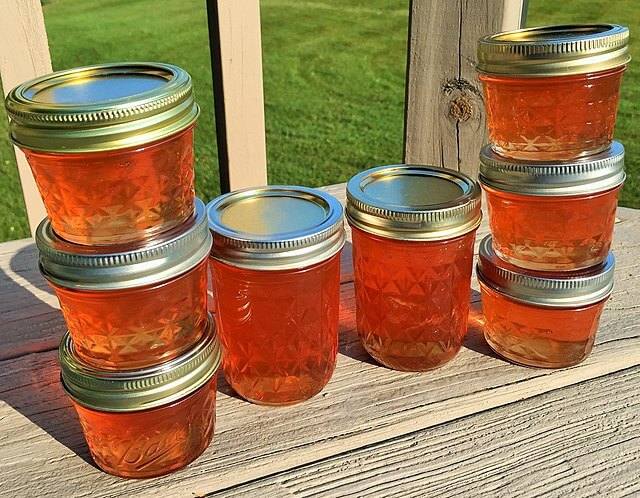
Finding and Foraging Crab Apples
So, crabapples are edible, delicious and a great ingredient! Where can we find them? The wonderful wild fruits of the crab apple tree have been foraged across the world for centuries. They are native to the Northern hemisphere, with many countries and continents having their own dominant species.
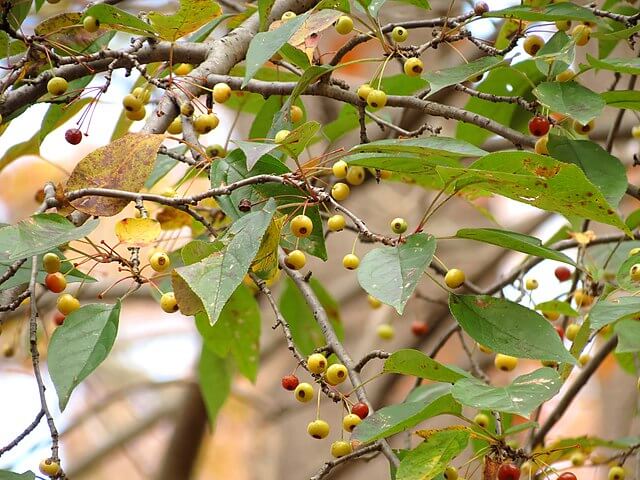
In the US there are 4 native crab apple species to look out for. The Southern, Oregon, Prairie and Sweet Crabapple. Each dominant in different climates and areas. However crab apples are known to hybridize easily, so a crab apple tree growing in your yard, or in the local woodland may be a hybrid!
The fruits ripen in the fall, around September, and you’ll have the best luck finding them at the edges of woodland and in areas of scrubland.
Which Crab Apples Taste the Best?
Compared to cultivated apples, crab apple fruits tend to have a more intense flavoring, and may have a sour or astringent taste. The more bitter varieties may be better suited to preparing cider, or even apple cider vinegar. Their sour taste is due to a higher amount of malic acid, an ingredient usually added to sour candy recipes! They also have a high amount of pectin which is why they are such a popular choice for jellies and fruit leather.
Whilst wild crab apples like the Southern crab apple (Malus angustifolia) may be too tart to eat raw, they are brilliant at creating jams. The Sweet Crab apple (Malus coronaria) however is just as the name suggests! You’ll find this species within the Great Lakes region and also in the Ohio Valley.
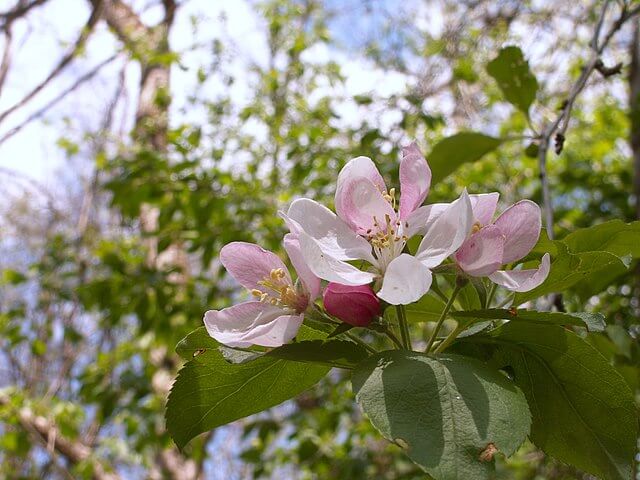
Hybrid cultivars of crab apple like Chestnut, Dolgo and Centennial are all well known for having tasty fruits. So you could easily plant one of these in the garden for your own supply of tasty crab apples.
A Great Wild Edible
A wonderful fruit to forage in the fall, crab apples are a brilliant native edible that can be used in lots of creative recipes. Whether you try them whole, or boil them into a tasty jam, they’re a great wild edible to try!







4 Responses
I have a question, do apples from the store put crabapple trees at risk for hybridization or diseases? Really wondering, because I want to make sure biodiversity is saved.
No need to worry. If you were to try to plant apples trees from the store or any other variety than what’s planted any hybridization would only affect seedling in the next generation. The traits of the tree in the landscape will not change.
Japanese crabapples (malus floribunda) are great to cook and then drain off the juice for jelly, fermented for hard cider or sweetened for soft juice. After the clear juice has been extracted through cheesecloth, run the mass of wet pomace through a tomato mill to get a thick pink applesauce. That can be sweetened or not, or made into apple butter, with sugar and spice. You can freeze the applesauce in quart ziploc bags and the juice as well. Last fall I picked and processed 60 lbs. great stuff!
What is your recipe for the apple butter? I just found a really nice crab apple tree on the property of our new house. Thank you.
Cheryl